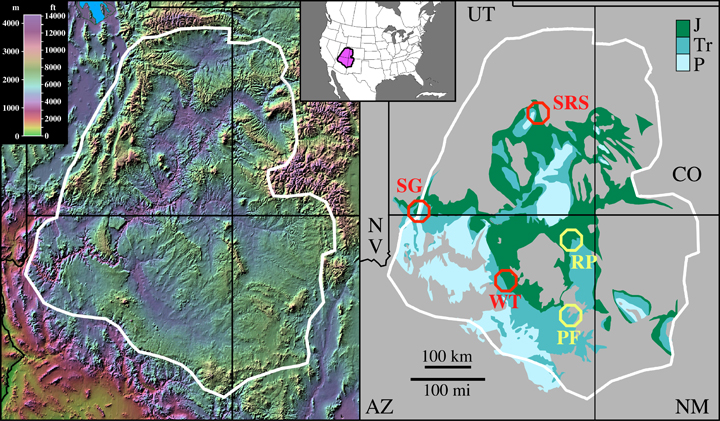
 |
| Figure 1: Map of the Colorado Plateau (white line) and adjacent areas: left, shaded digital elevation map; right, generalized geological map showing Permian and Triassic and Jurassic strata (from Olsen et al., Scientific Drilling, 2008). Core areas are: PF, Petrified Forest, Arizona; RP, Rock Point, Utah; SG, St. George, Utah; WT, Wards Terrace, Arizona; SRS, San Rafael Swell, Utah. |